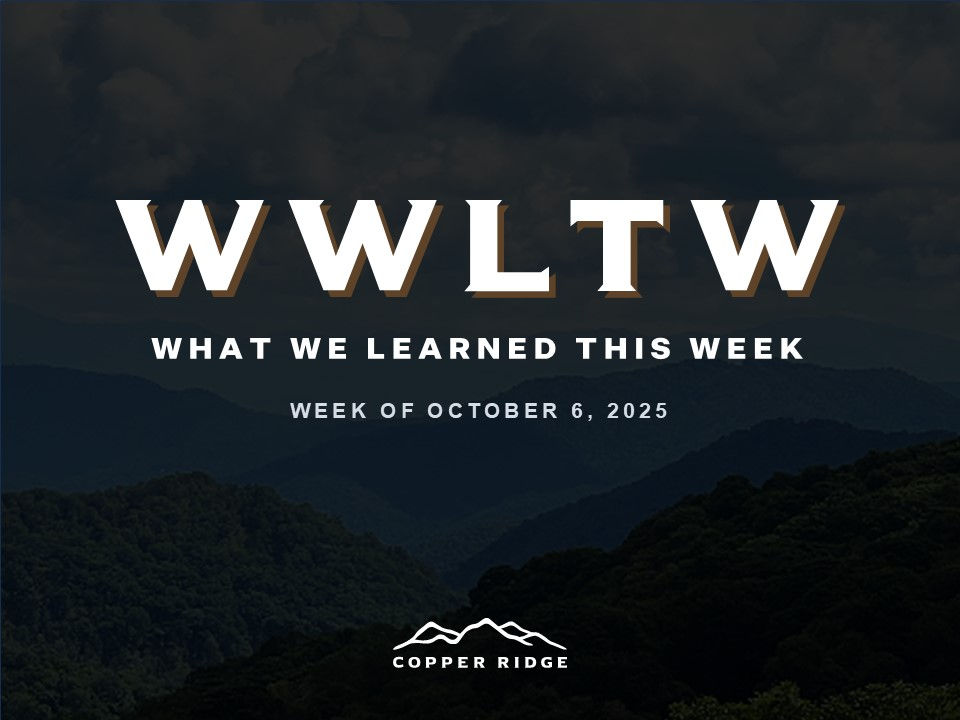What We Learned This Week
- Tyler Smith

- Sep 11
- 3 min read
Tough Stretch for Lululemon: It seems Lululemon isn’t immune to the cyclicality of fashion trends after all. For years, the company managed to defy the typical boom-and-bust pattern. It launched out of the gate as a true innovator, essentially defining today’s athleisure market and cementing itself as a status brand in women’s apparel. Unlike most upstarts that eventually get drowned out once larger players copy their products, Lulu held its ground - growing steadily, expanding into menswear with similar success, and proving it was more than a flash in the pan. Even through product mishaps and PR stumbles, the foundation looked solid.
But cracks have started to show. Recent quarters have delivered underwhelming sales as newer brands like Alo capture consumer attention. Lulu’s product lineup has gone stale, and its slower pace of innovation has left the door open for competitors with fresher offerings. Last quarter brought more of the same: declining U.S. sales, markdowns on outdated inventory, and profit pressure from tariffs and the elimination of de minimis shipping exemptions. Now the company faces the dual challenge of softening demand and rising costs - a tough margin outlook going forward. Management has acknowledged the missteps and is pledging to accelerate product innovation and new launches. Lululemon isn’t going away anytime soon given its strong foothold, but whether it can reclaim its prior aura as a growth juggernaut is very much an open question.
Kraft Heinz Breaking Up: Big news in the food and beverage space: Kraft Heinz is splitting into two companies, effectively unwinding the high-profile 2015 merger between Kraft and Heinz. That deal, engineered by Warren Buffett and Brazilian private equity firm 3G Capital, was heralded at the time as a transformative packaged food powerhouse. But the years since have been far less kind. The company struggled to adapt as consumers shifted toward fresher, less processed options, and 3G’s aggressive cost-cutting drew criticism for starving the business of innovation. The result has been years of underperformance, with Kraft Heinz losing nearly 70% of its value since the merger. Even Buffett later admitted he overpaid.
The breakup will create one company focused on condiments, sauces, and shelf-stable meats, and another centered on staples like Oscar Mayer, Kraft Singles, and Lunchables. Management argues the separation will unlock value beyond today’s $33 billion market cap. It also fits into a broader industry trend: Kellogg recently split in two, while Keurig Dr Pepper has begun unwinding its own 2018 combination. Consumer tastes are becoming more discerning, and in many cases, size has become a liability rather than an advantage. Corporate America has long cycled between building empires and breaking them apart, and this is simply the latest turn of that wheel. It will be fascinating to watch how this next chapter plays out.
New iPhones: Apple held its fall product event this week, unveiling its latest lineup of iPhones along with updates to the Apple Watch and AirPods Pro 3, which now include improved sizing and real-time language translation. As always, the iPhone was the centerpiece. The company introduced the iPhone 17 family with standard and Pro models, plus a new entry: the iPhone Air. Marketed as the thinnest iPhone yet, the Air emphasizes design, though Apple’s vague comments around “all-day” battery life suggest performance there may be a sticking point for some users.
Beyond that, the updates were mostly incremental (better cameras, faster chips, and modest battery gains), nothing likely to spark a major upgrade cycle. Attention remains fixed on 2026, when Apple is rumored to debut its first foldable device alongside a broader design refresh. For now, the bigger story is Apple’s AI strategy, where it still lags peers and doesn’t expect meaningful updates until 2026. With few surprises, this week’s announcements are unlikely to move the stock in the near term, leaving investors focused on the longer-term product pipeline and AI positioning.




Comments